Advertisements
Advertisements
Question
In a ΔABC, ∠A = 50° and BC is produced to a point D. If the bisectors of ∠ABC and ∠ACDmeet at E, then ∠E =
Options
25°
50°
100°
75°
Solution
In the given figure, bisectors of ∠ABCand ∠ACDmeet at E and ∠BAC = 50°
We need to find ∠BEC
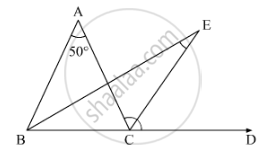
Here, using the property, “an exterior angle of the triangle is equal to the sum of the opposite interior angles”, we get,
In ΔABC with ∠ACD as its exterior angle
ext . ∠ACD = ∠A + ∠ABC ........(1)
Similarly, in Δ BECwith ∠ECDas its exterior angle
ext . ∠ECD = ∠EBC + ∠BEC
`1/2 ∠ACD = 1/2 ∠ABC + BEC`
(CE and BE are the bisectors of ∠ACD and ∠ABC)
∠BEC = 1/2 ∠ACD - 1/2 ∠ABC .......(2)
Now, multiplying both sides of (1) by 1/2
We get,
`1/2 ∠ACD = 1/2 ∠A +1/2 ∠ABC`
`1/2 ∠A = 1/2 ∠ACD - 1/2 ∠ABC` ......(3)
From (2) and (3) we get,
`∠BEC =1/2 ∠A`
`∠BEC =1/2 (50°)`
`∠BEC = 25°`
Thus, `∠BEC = 25°`
APPEARS IN
RELATED QUESTIONS
In Fig. 10.40, it is given that RT = TS, ∠1 = 2∠2 and ∠4 = 2∠3. Prove that ΔRBT ≅ ΔSAT
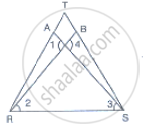
In Fig. 10.23, PQRS is a square and SRT is an equilateral triangle. Prove that
(i) PT = QT (ii) ∠TQR = 15°
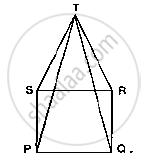
Two lines AB and CD intersect at O such that BC is equal and parallel to AD. Prove that the lines AB and CD bisect at O.
If the bisector of the exterior vertical angle of a triangle be parallel to the base. Show that the triangle is isosceles.
In an isosceles triangle, if the vertex angle is twice the sum of the base angles, calculate the angles of the triangle.
Which of the following statements are true (T) and which are false (F)?
Of all the line segments that can be drawn from a point to a line not containing it, the perpendicular line segment is the shortest one.
If the measures of angles of a triangle are in the ratio of 3 : 4 : 5, what is the measure of the smallest angle of the triangle?
The side BC of ΔABC is produced to a point D. The bisector of ∠A meets side BC in L. If ∠ABC = 30° and ∠ACD = 115°, then ∠ALC = ______.
CDE is an equilateral triangle formed on a side CD of a square ABCD (Figure). Show that ∆ADE ≅ ∆BCE.
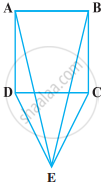
ABC is an isosceles triangle with AB = AC and D is a point on BC such that AD ⊥ BC (Figure). To prove that ∠BAD = ∠CAD, a student proceeded as follows:
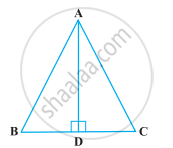
In ∆ABD and ∆ACD,
AB = AC (Given)
∠B = ∠C (Because AB = AC)
and ∠ADB = ∠ADC
Therefore, ∆ABD ≅ ∆ACD (AAS)
So, ∠BAD = ∠CAD (CPCT)
What is the defect in the above arguments?
[Hint: Recall how ∠B = ∠C is proved when AB = AC].
